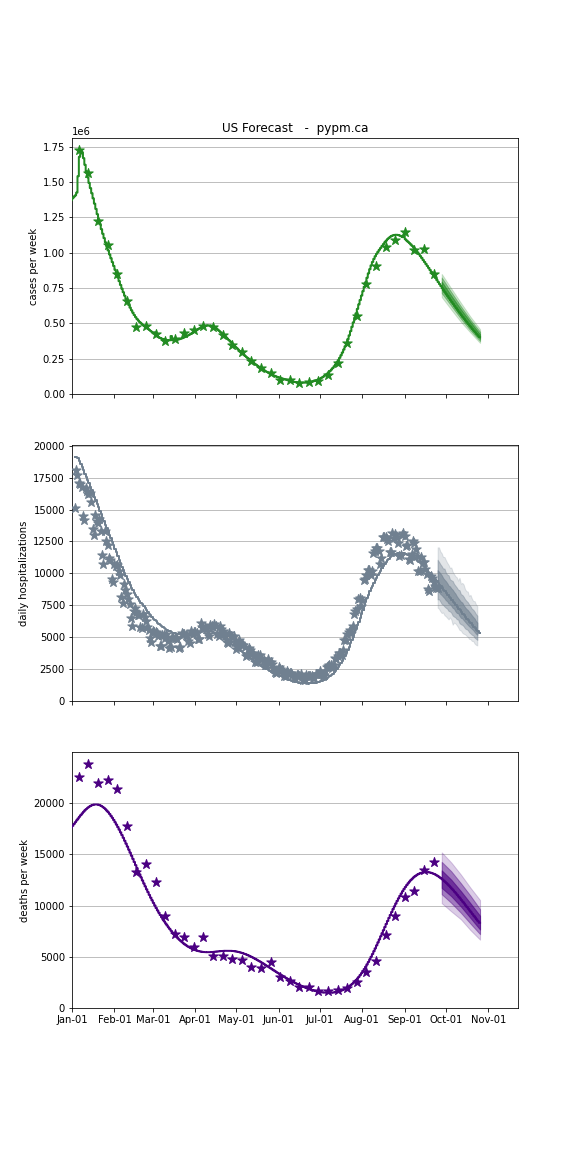September 26, 2021 Analysis of USA state data
Summary: After many weeks with rapid growth in cases (more that six weeks after the delta variant became dominant), most states have turned around, due to changes in measures or due to the herd effect begining to take effect.
Individual state histories
The plots below show the case / hospitalization / deaths data for all 50 states, DC, and PR. The data fits were done using data up until September 25, 2021.
An infection model is setup for each state, calibrated using the case data from that state. Given the time history of infections, projections for hospitalization and death are calculated and shown as curves in the plots below. The degree that hospitalization and death data following the model projections, indicates the ability of this approach to forecast future hospitalization and death.
The green points are the daily cases, the grey points the daily hospitalizations, and indigo points are the daily deaths (each averaged over a week). The case data are used to define the periods for which transmission rate appears to be constant. The vertical lines show where the transmission rate is changed. If the susceptibe fraction is constant (immunity not changing quickly), constant transmission rates lead to steady exponential growth or decline during, which appear as straight lines on these log-scale plots. With immunity growing, these lines are no longer straight - bending downwards due to the herd effect. The curves are the model expectations for cases, hospitalizations, and deaths, and all three are determined from the case data.
For this analysis, a long tail in the delay time between symptoms and hospital admission is included - which improves the model fits to hospitalization data. Now with this correction, the data appear to be consistent with the hypothesis that hospitalization probability is roughly constant (for most states).
The dashed curves separately show the reported cases from the original strains and from variants of concern, divided into two types B.1.1.7 (alpha) and B.1.617.2 (delta).
At the bottom of this page, plots showing the combined forecast for the US are shown.
Alaska
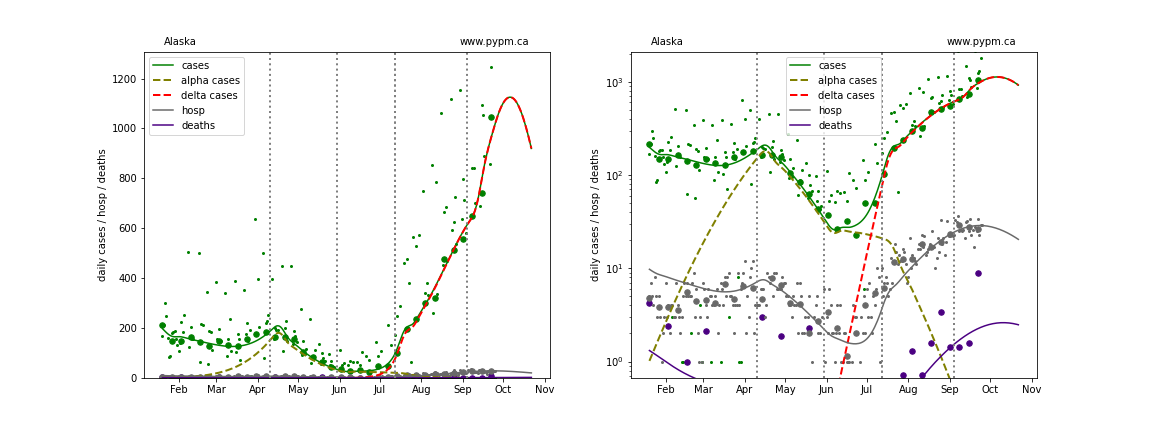
Alabama
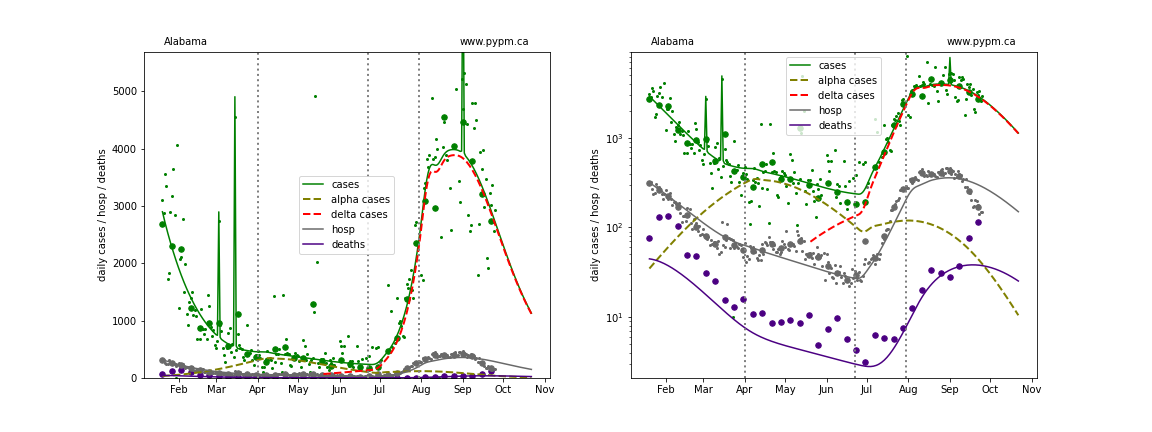
Arkansas
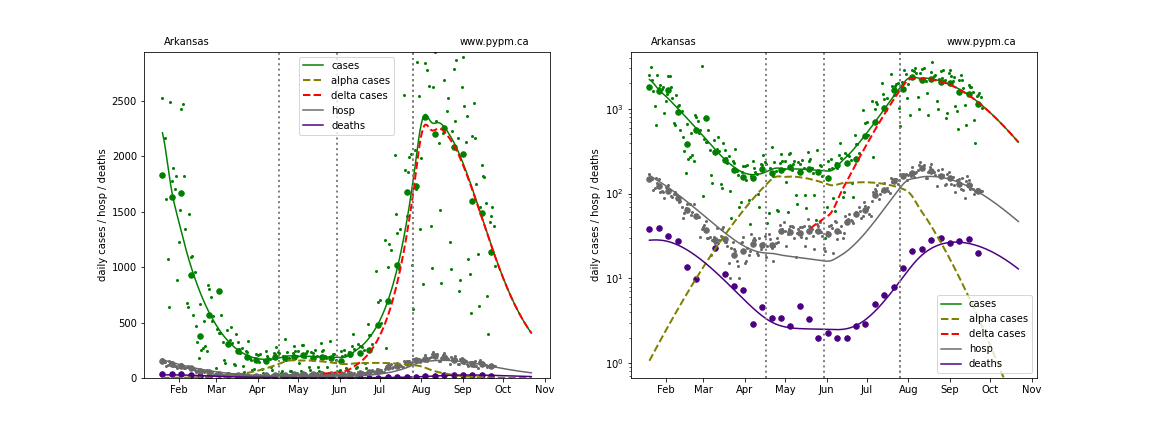
Arizona
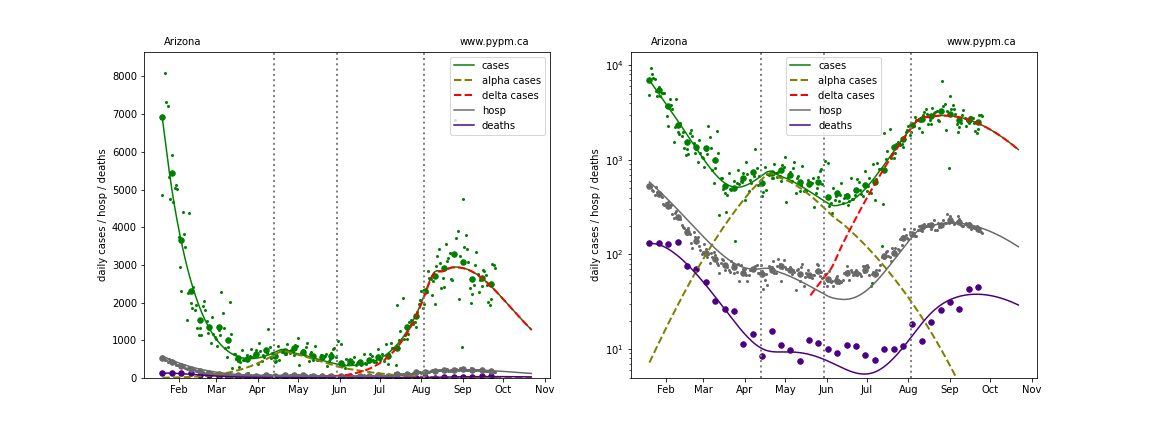
California
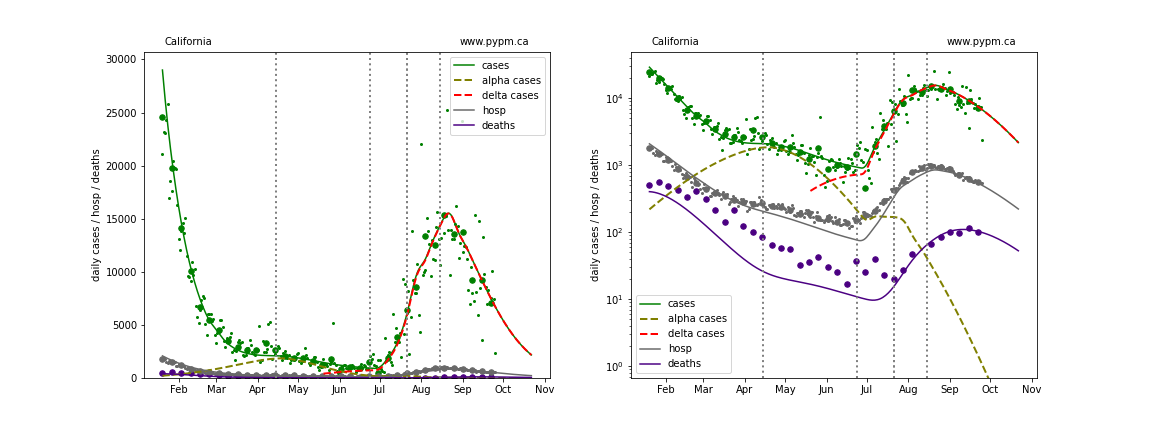
Colorado
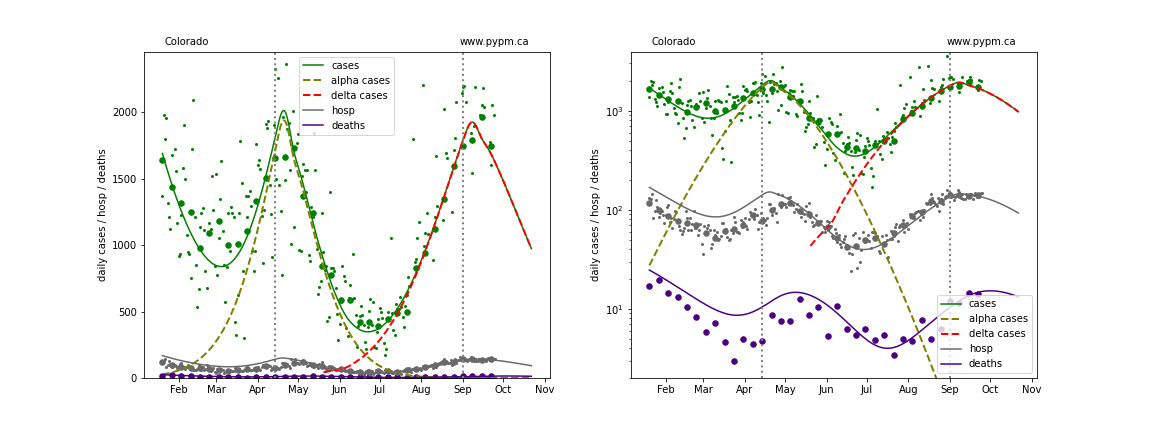
Connecticut
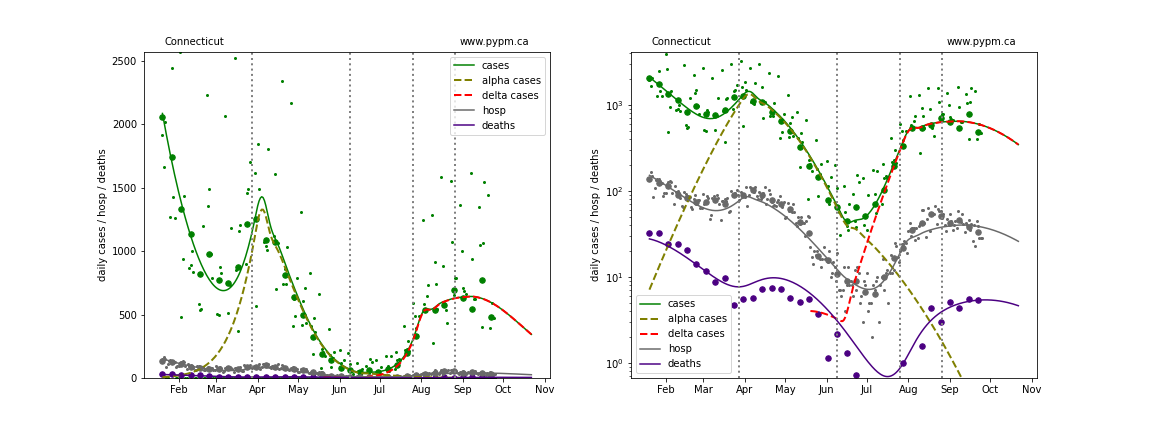
District Of Columbia
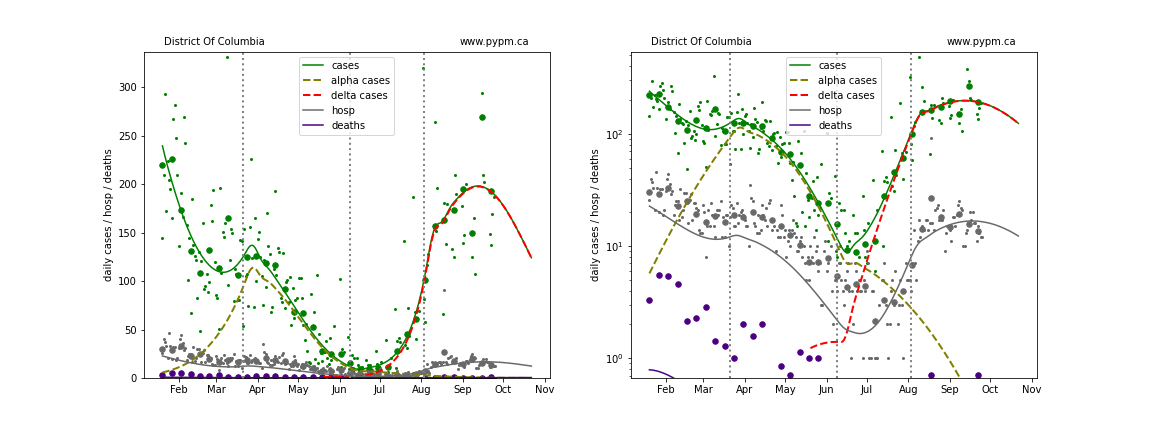
Delaware
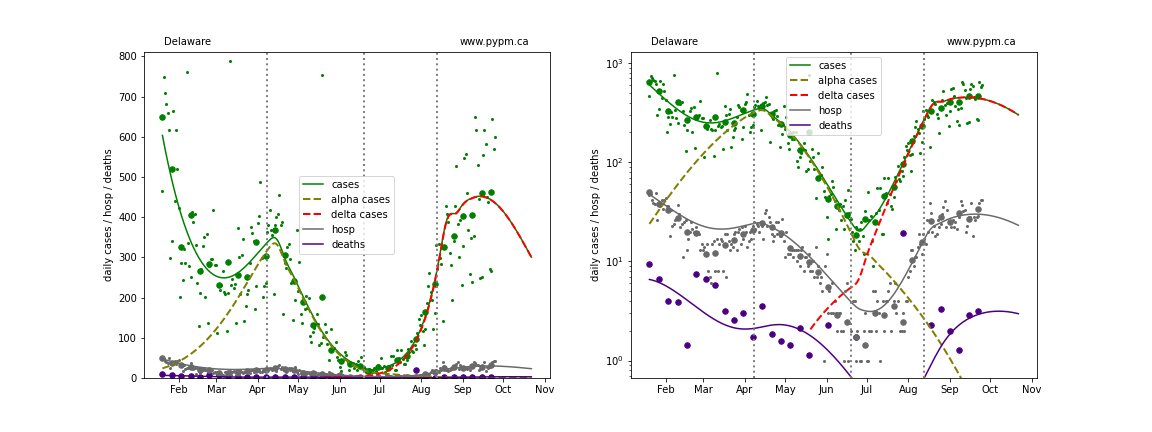
Florida
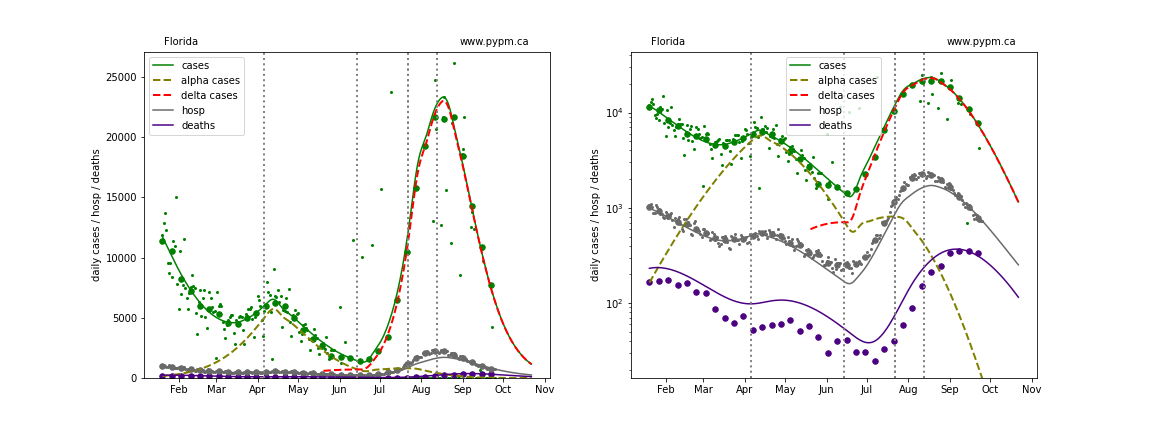
Georgia
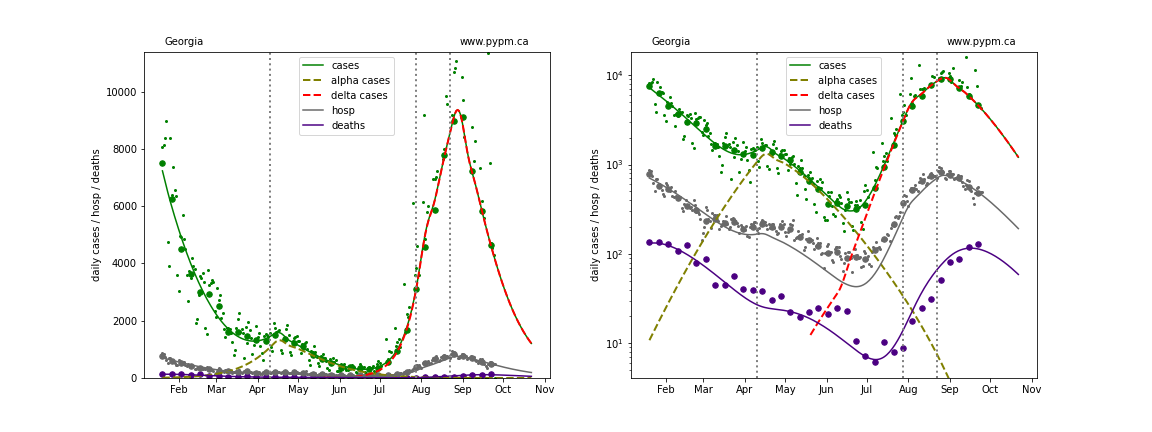
Hawaii
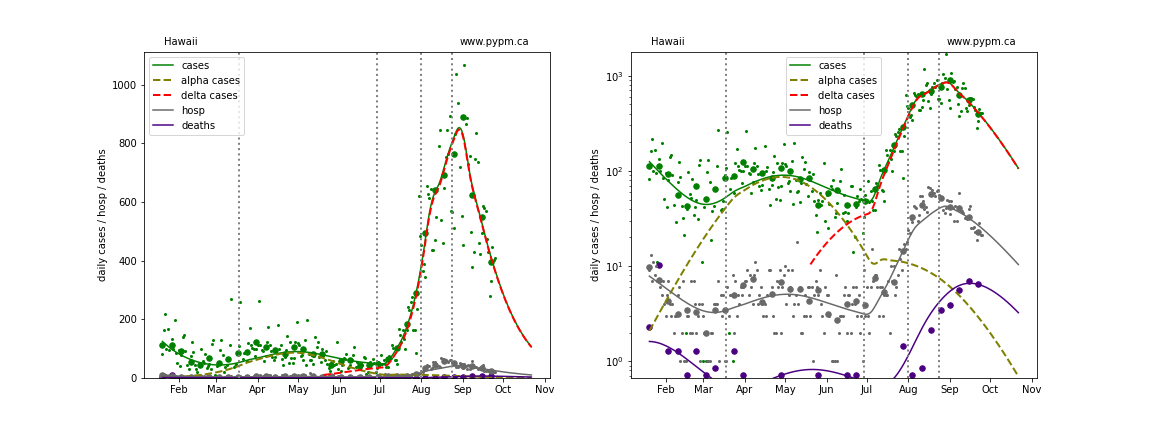
Iowa
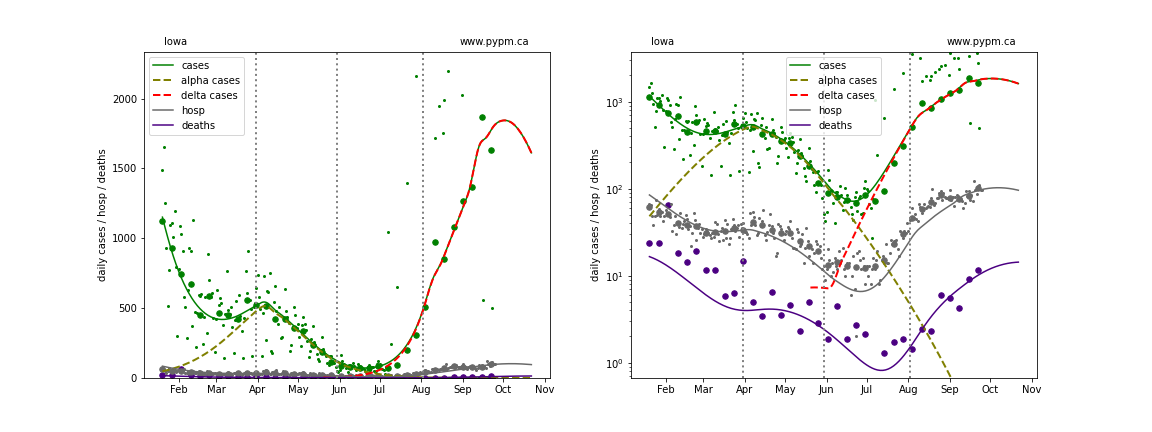
Idaho
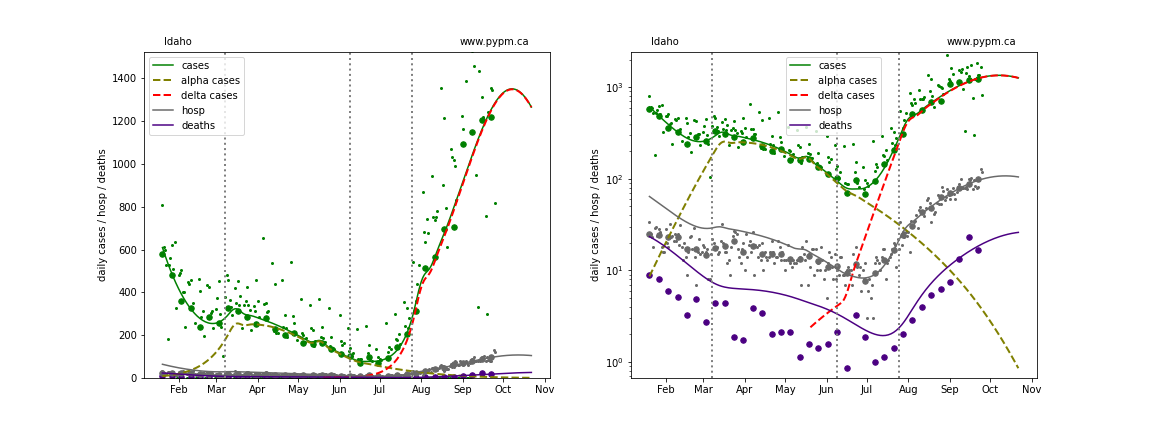
Illinois
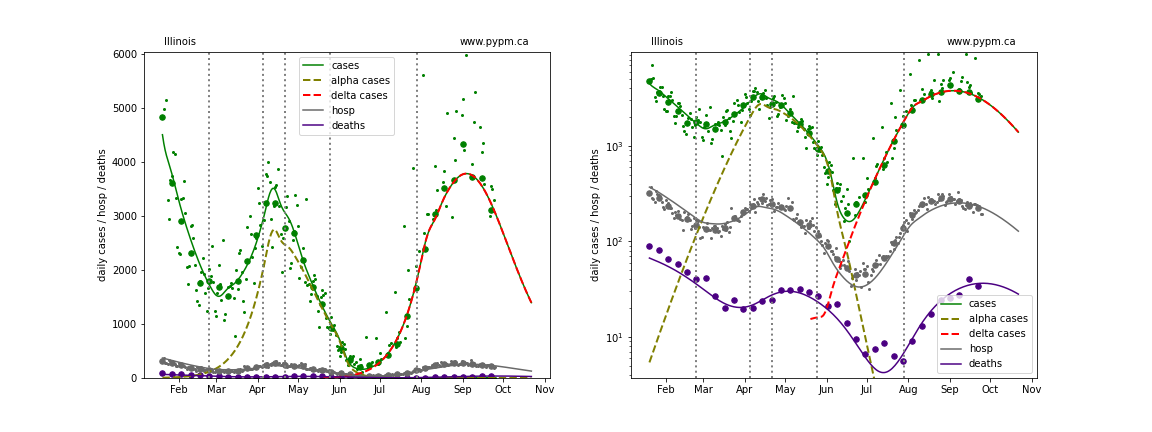
Indiana
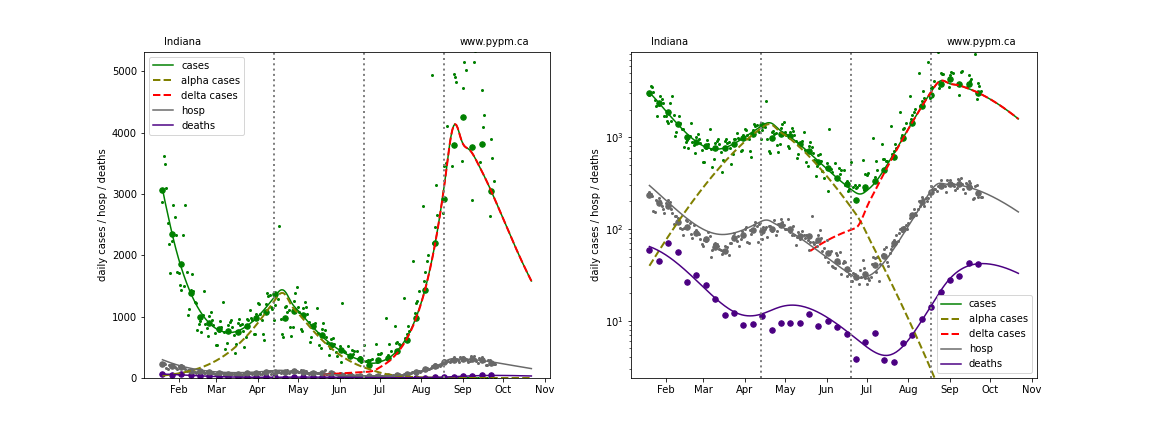
Kansas
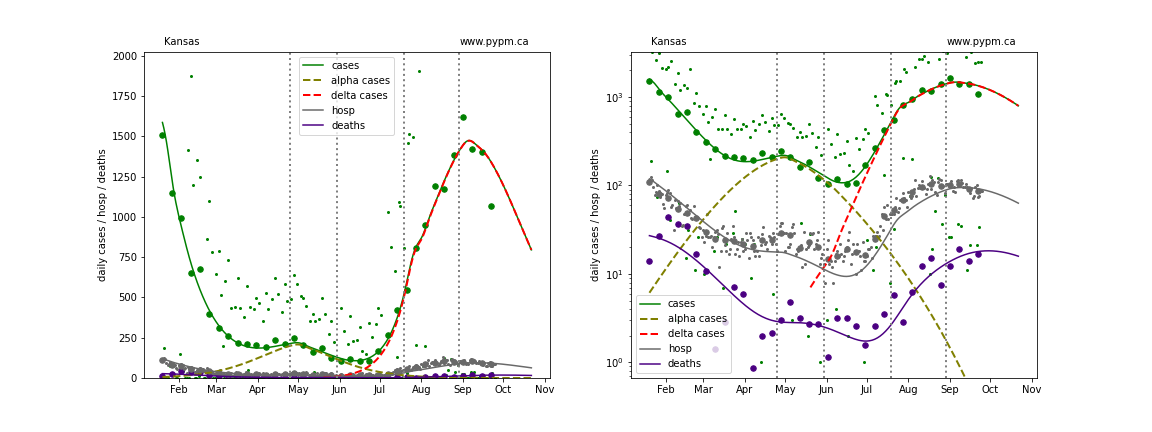
Kentucky
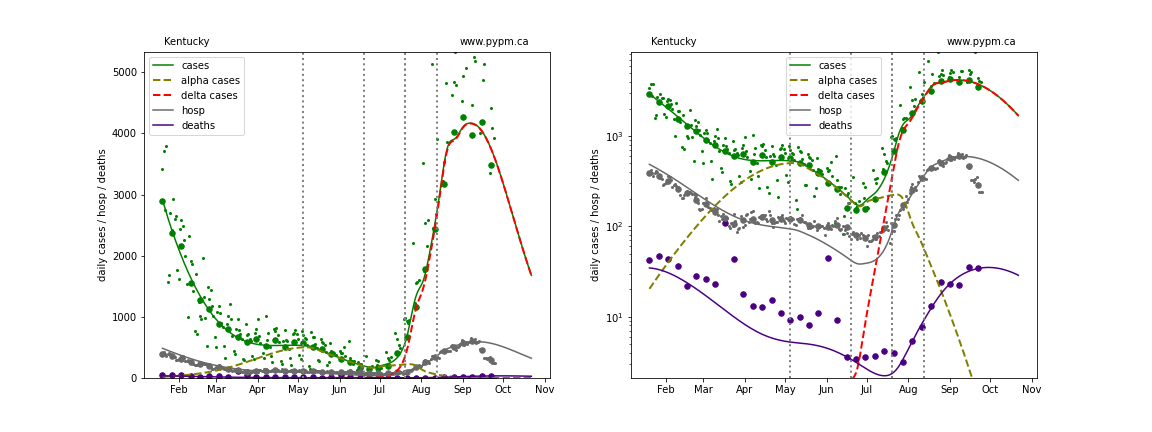
Louisiana
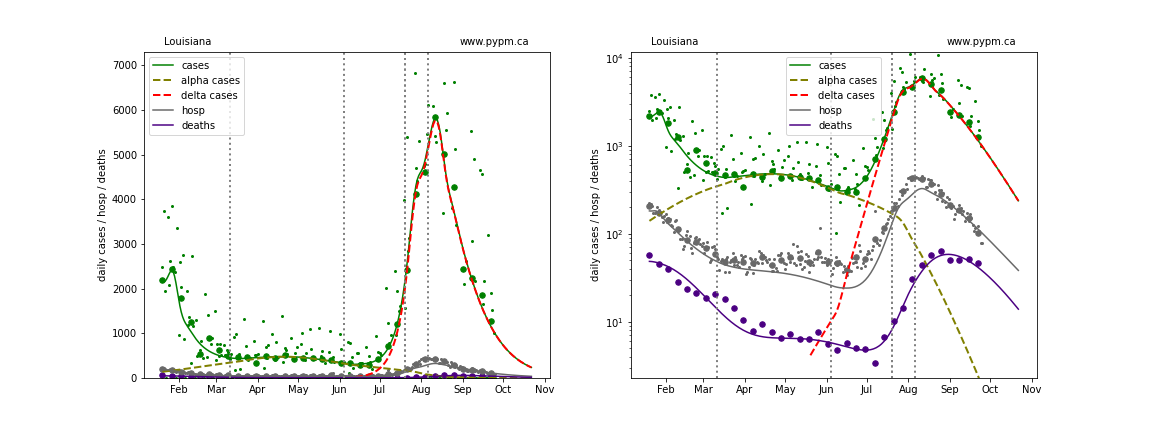
Massachusetts
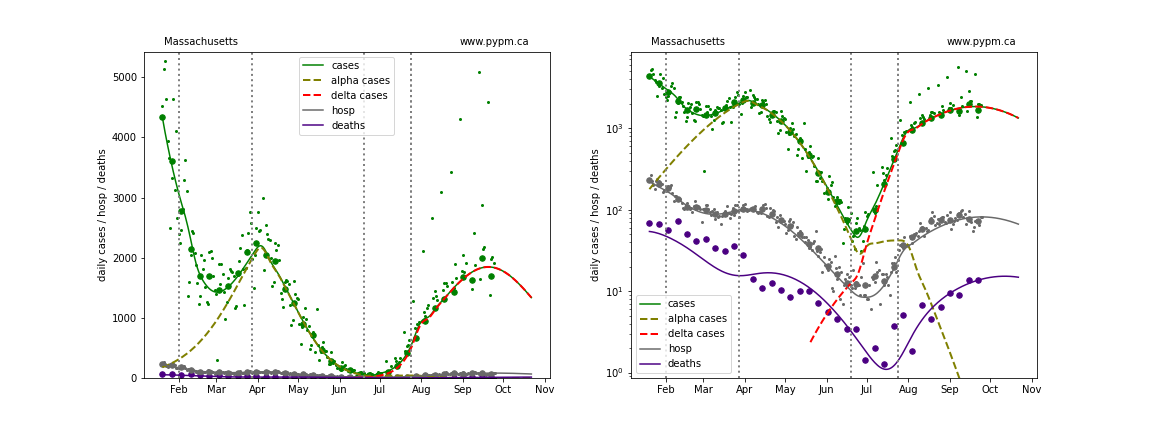
Maryland
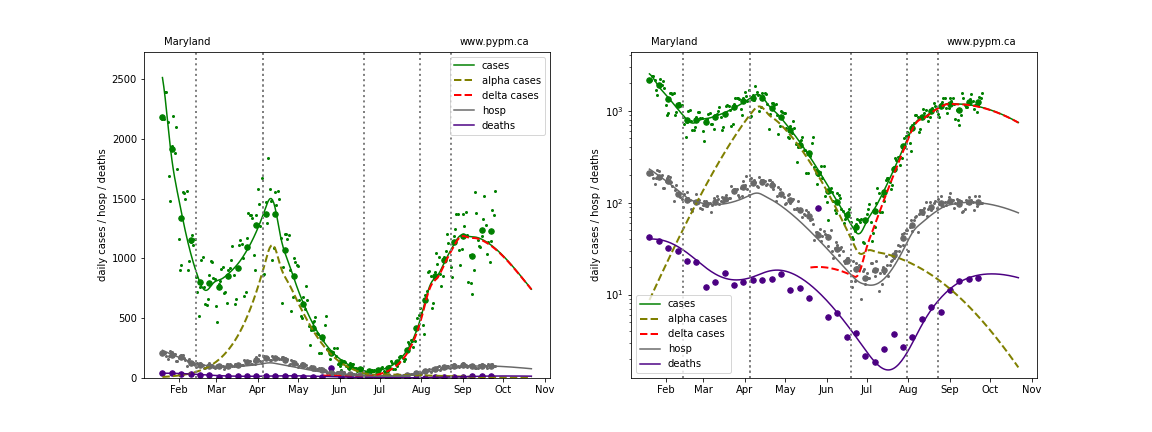
Maine
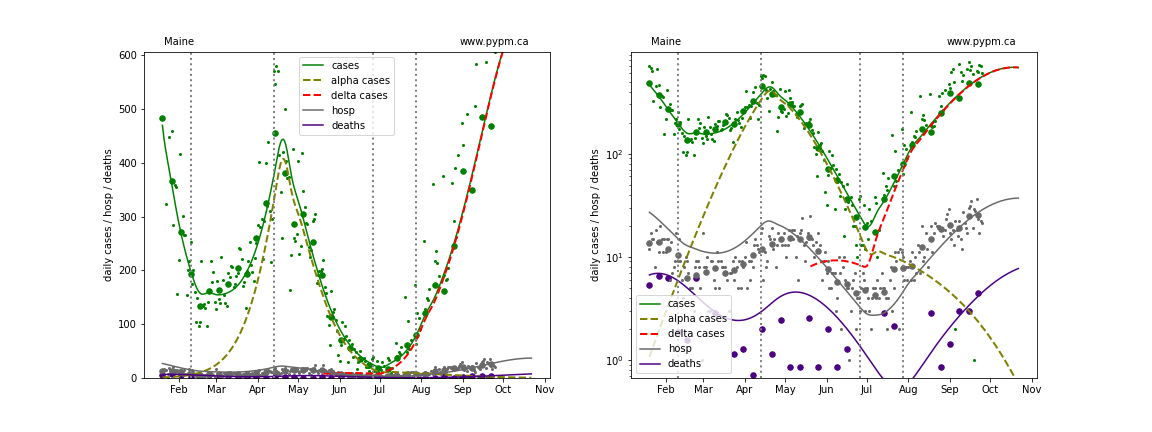
Michigan
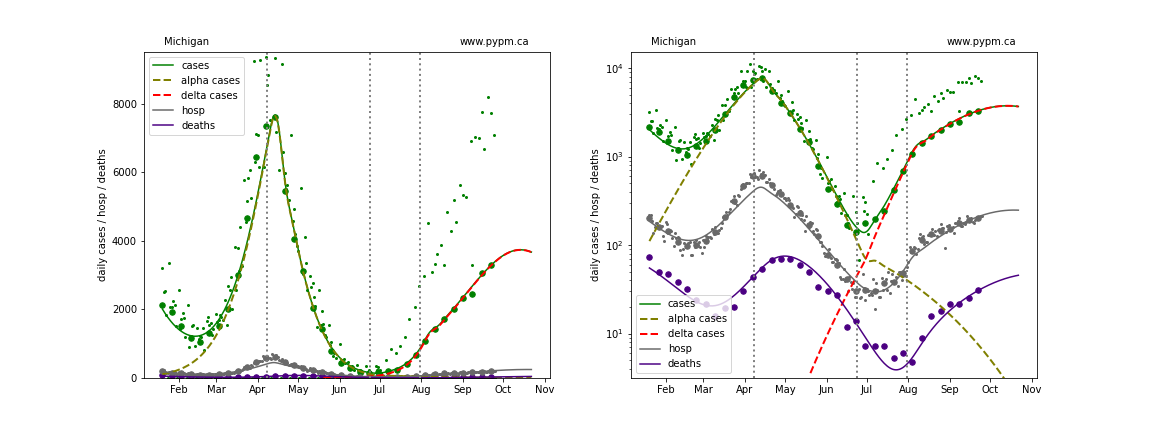
Minnesota
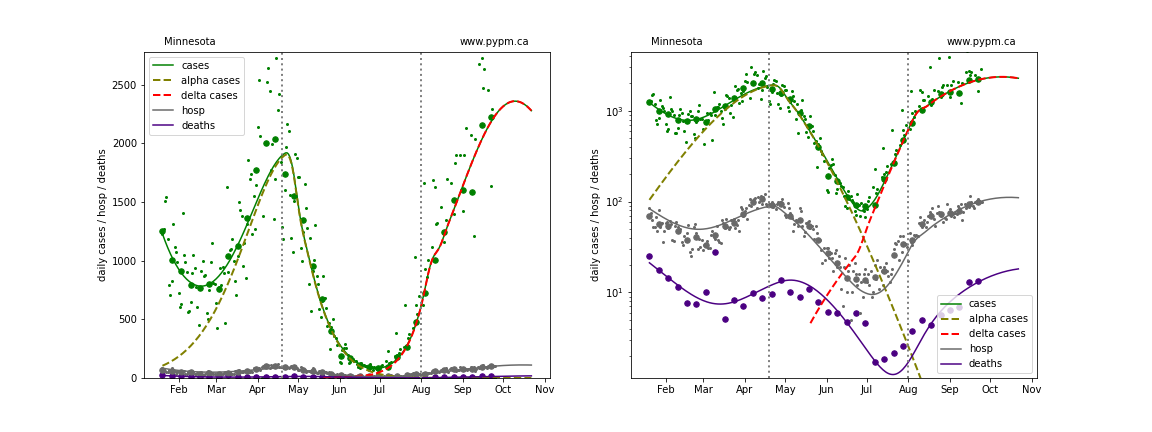
Missouri
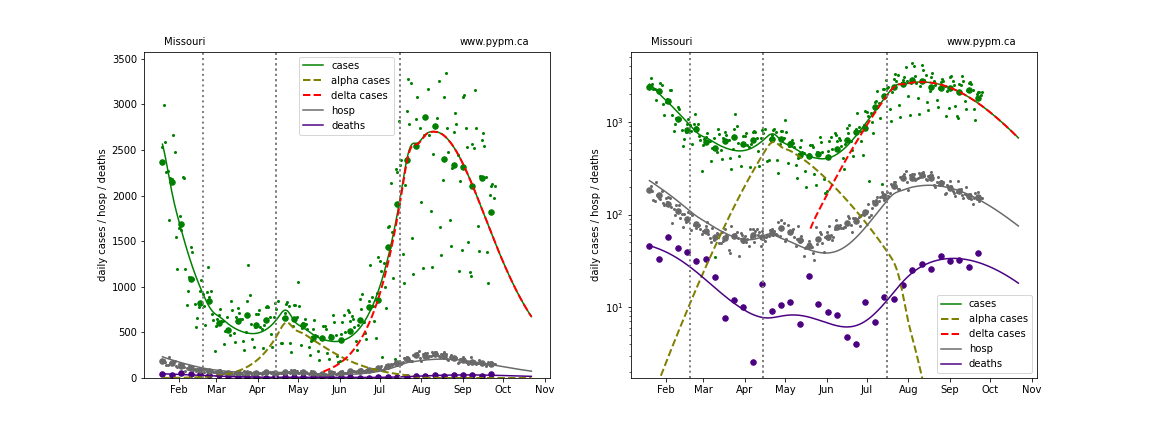
Mississippi
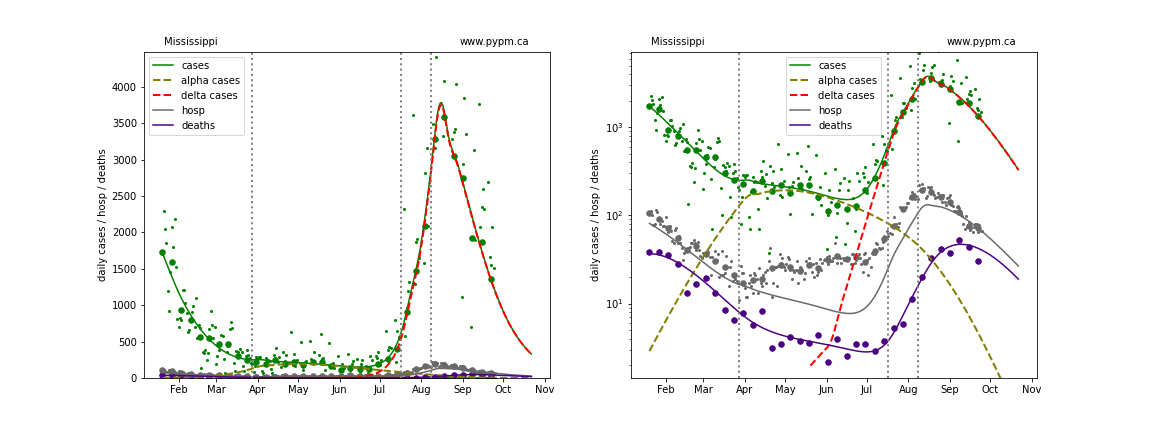
Montana
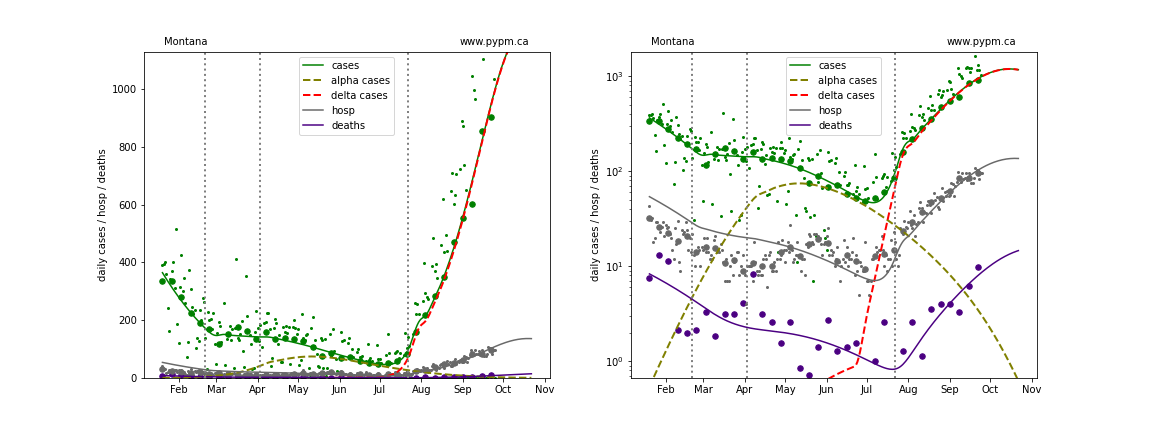
North Carolina
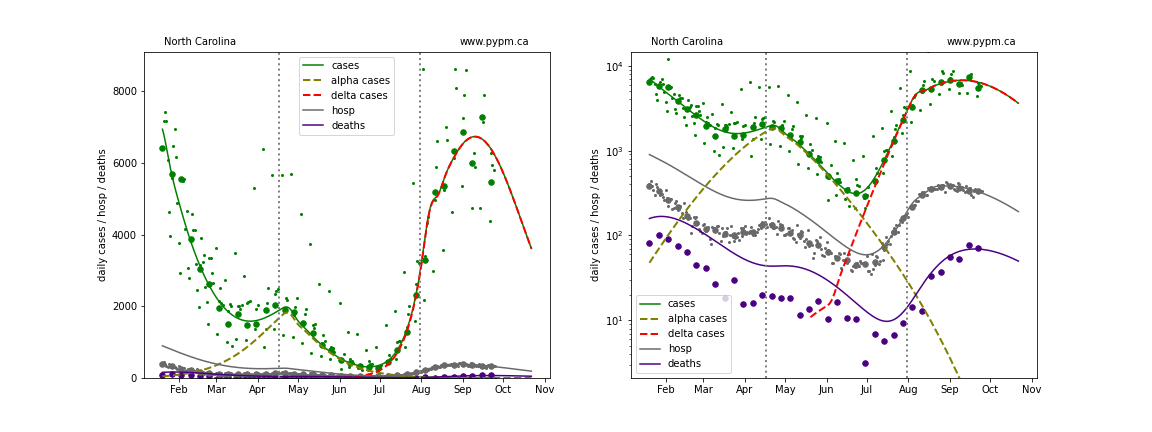
North Dakota
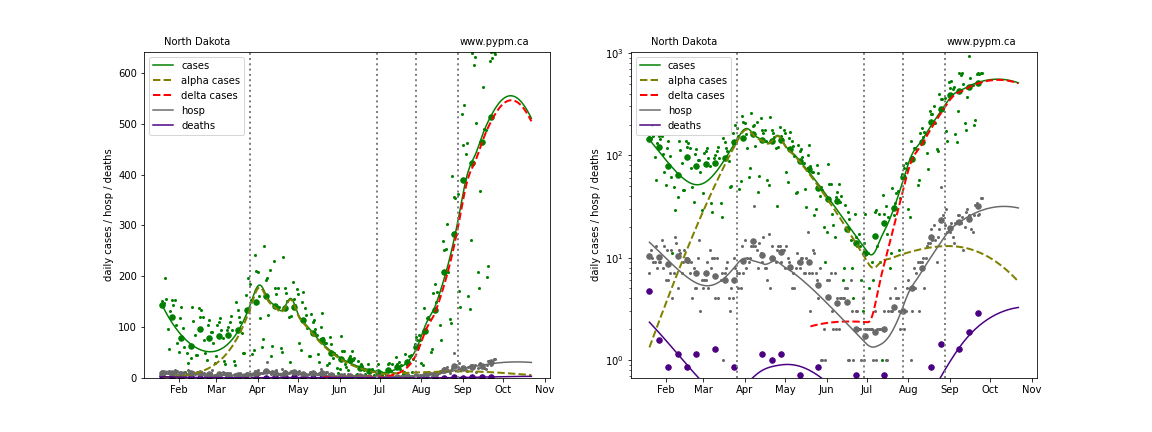
Nebraska
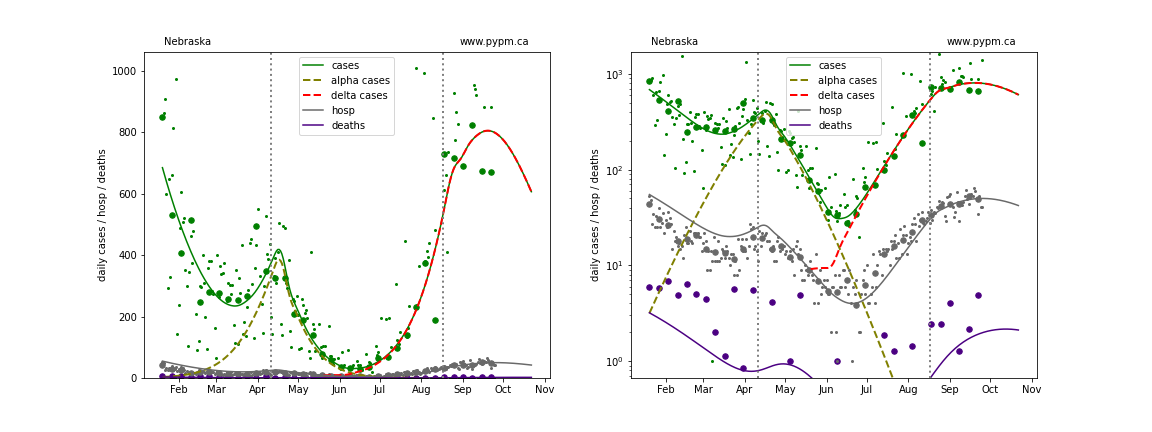
New Hampshire
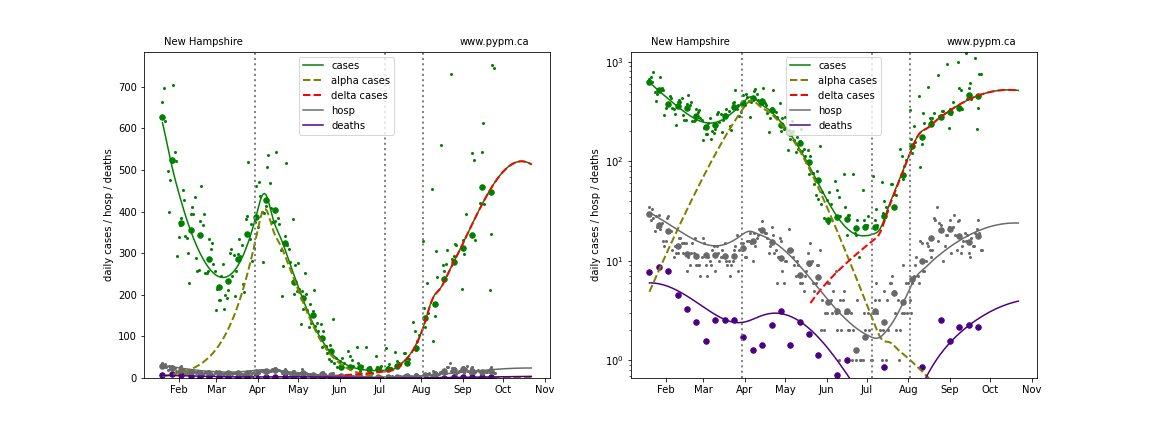
New Jersey
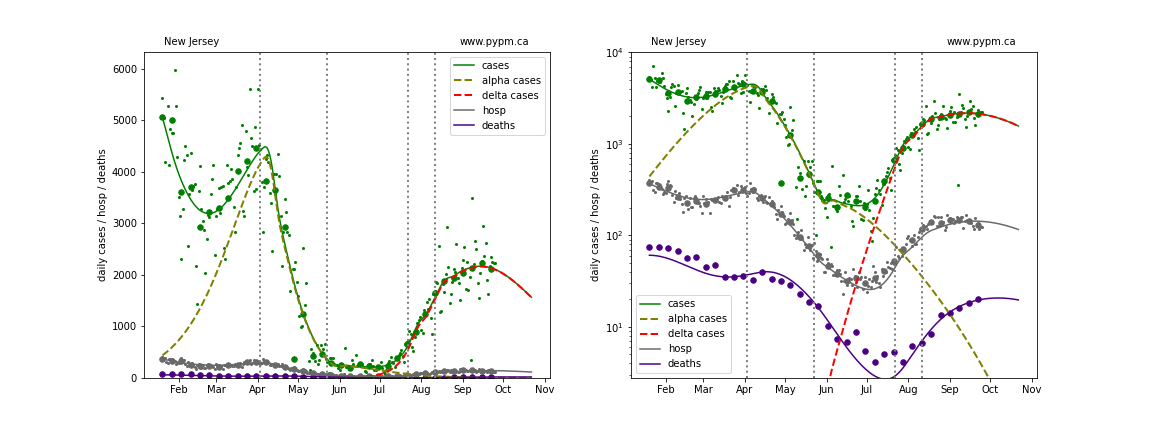
New Mexico
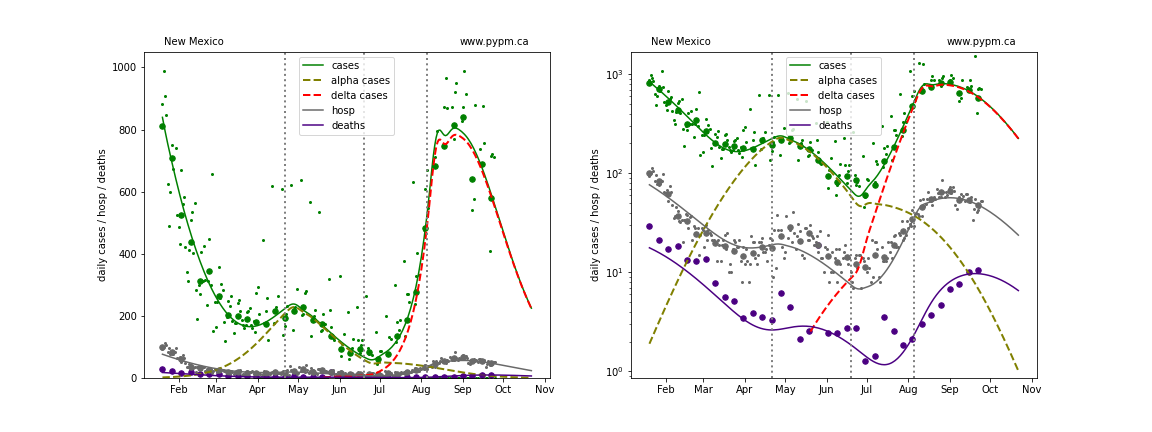
Nevada
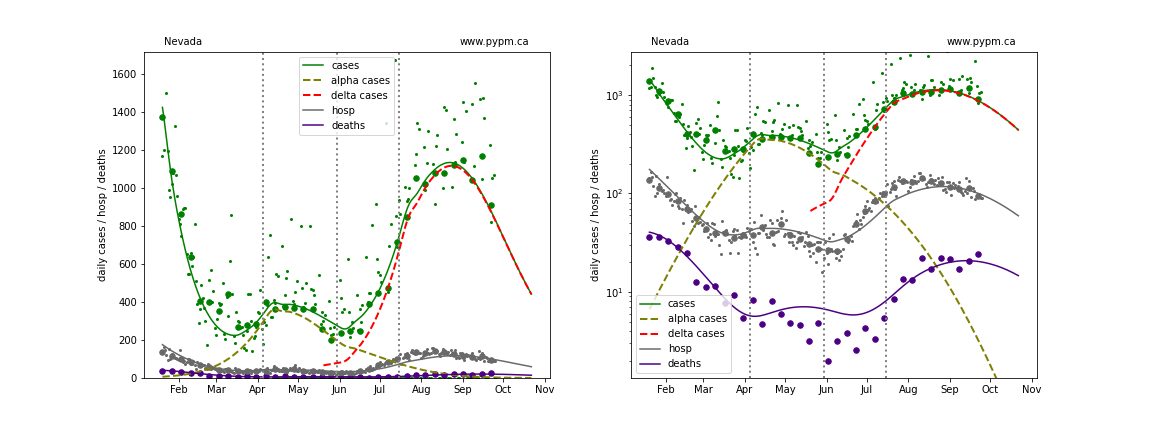
New York
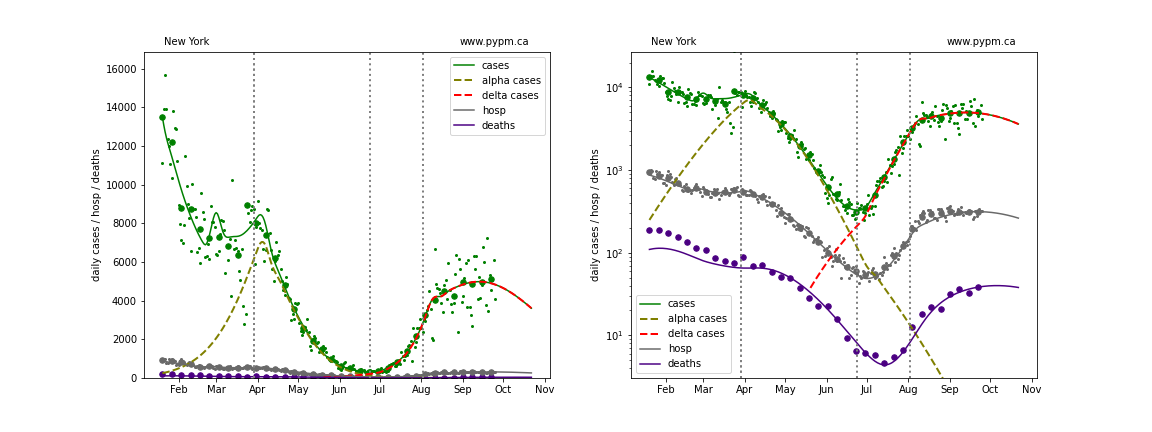
Ohio
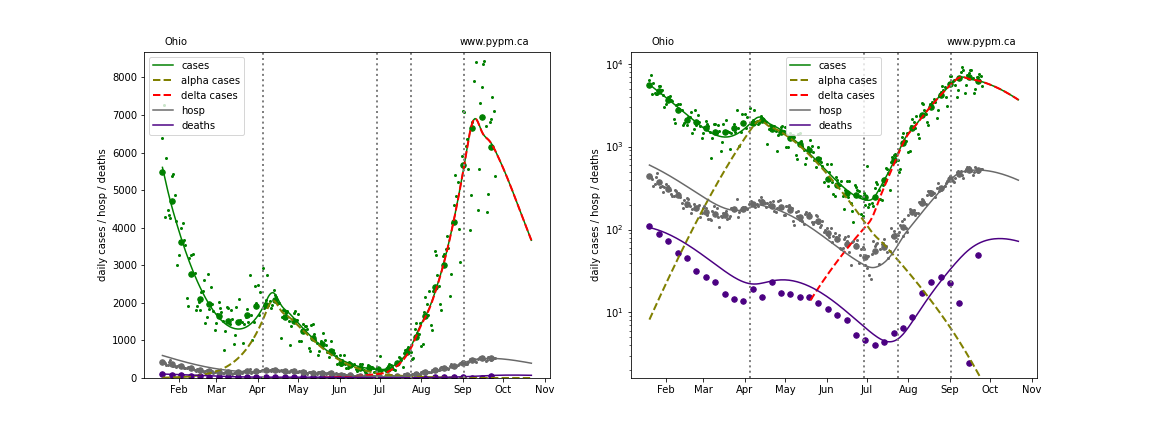
Oklahoma
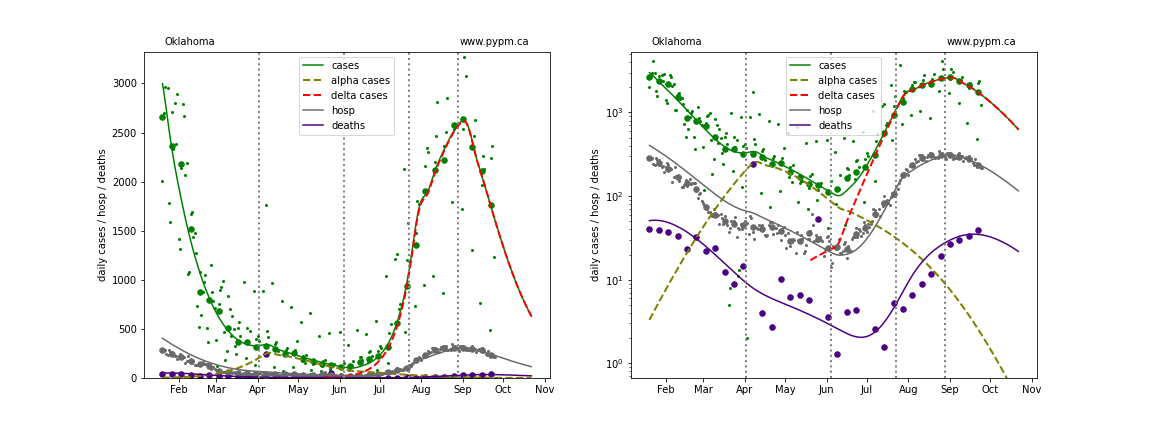
Oregon
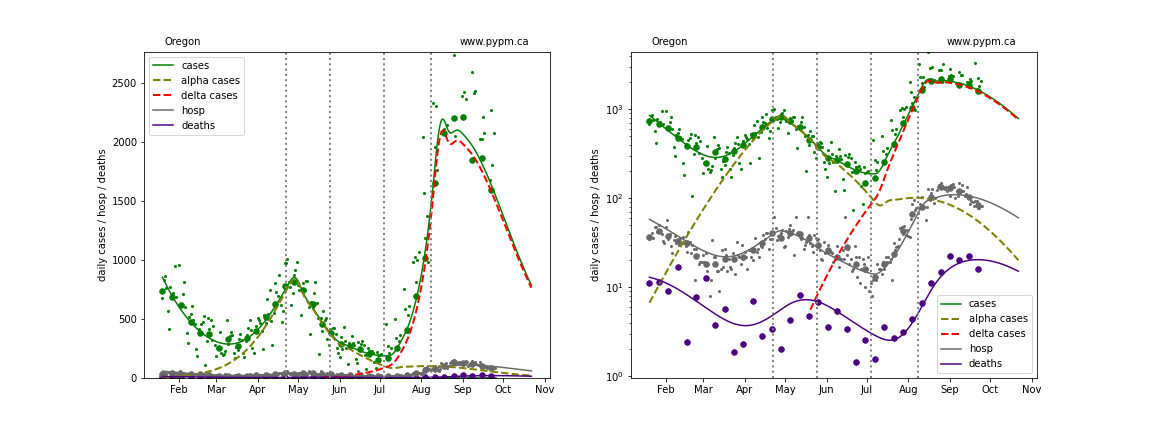
Pennsylvania
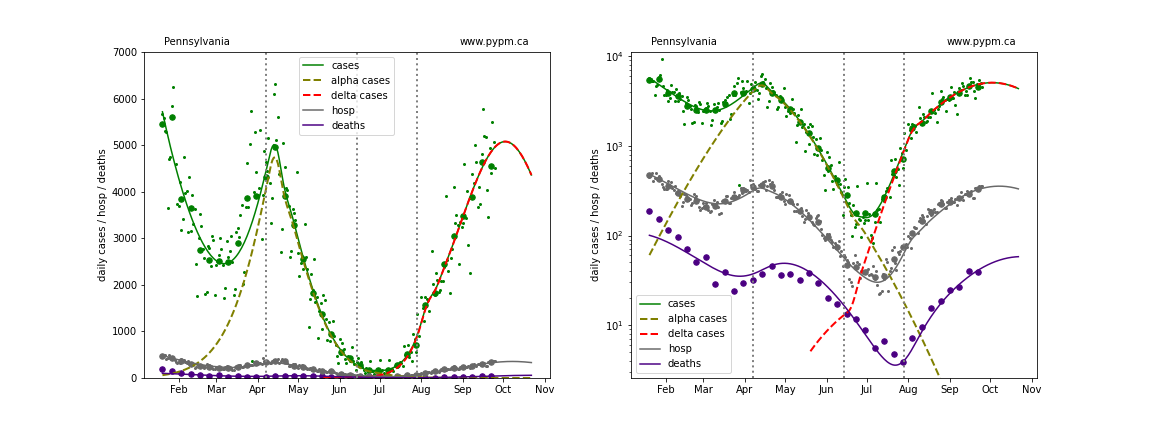
Puerto Rico
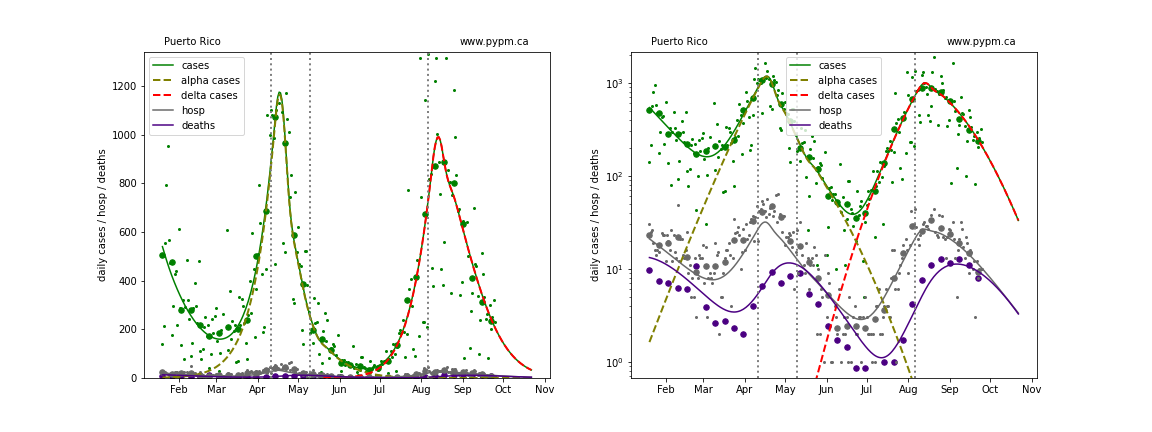
Rhode Island
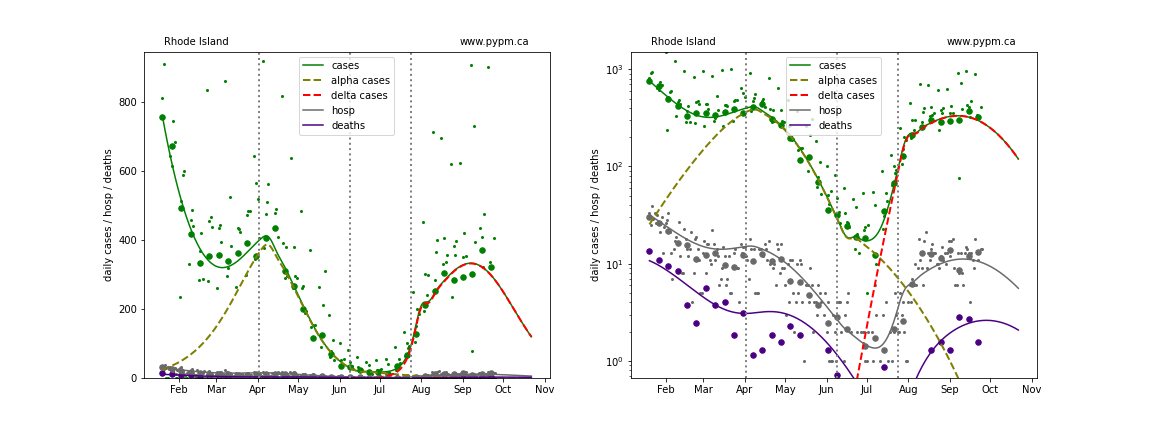
South Carolina
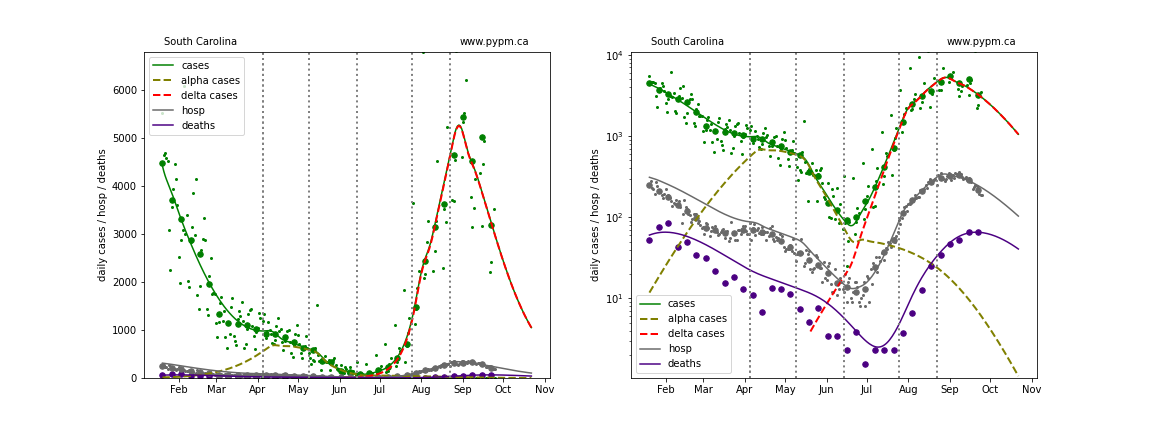
South Dakota
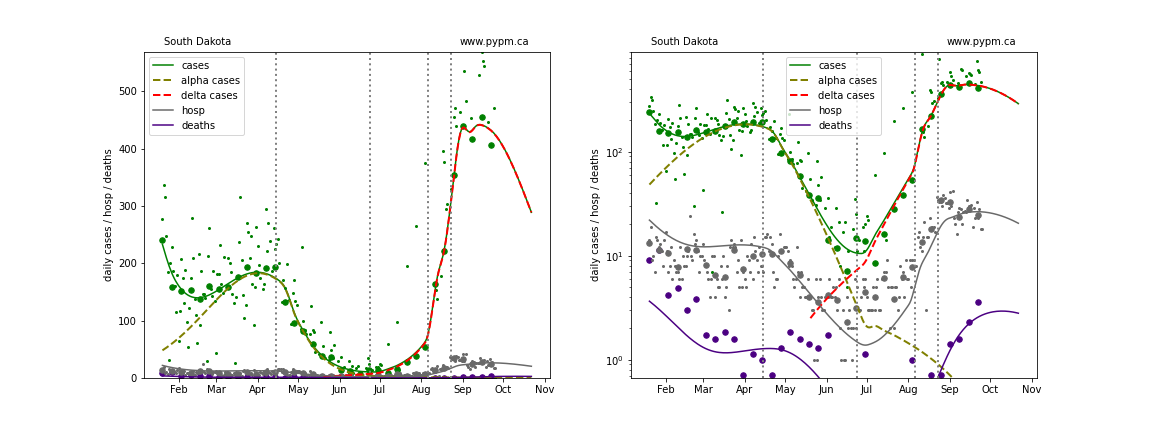
Tennessee

Texas
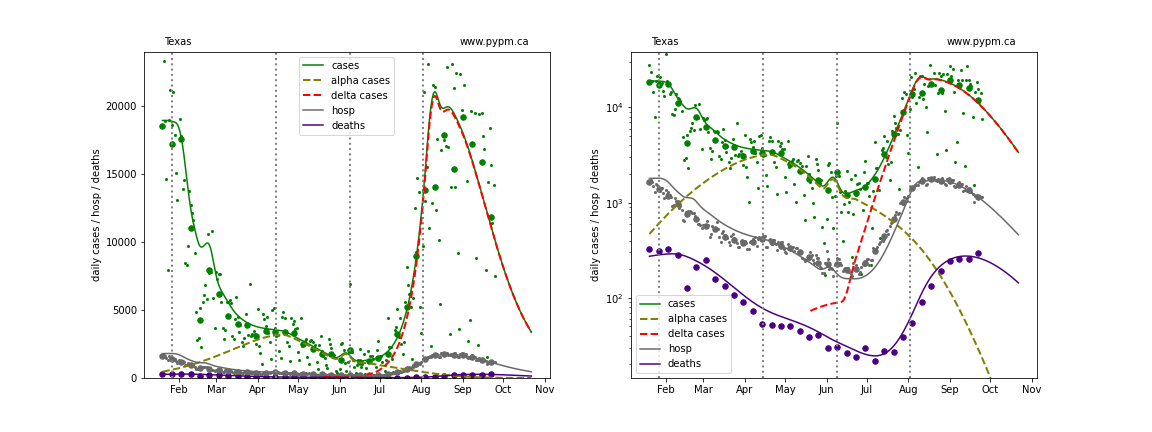
Utah
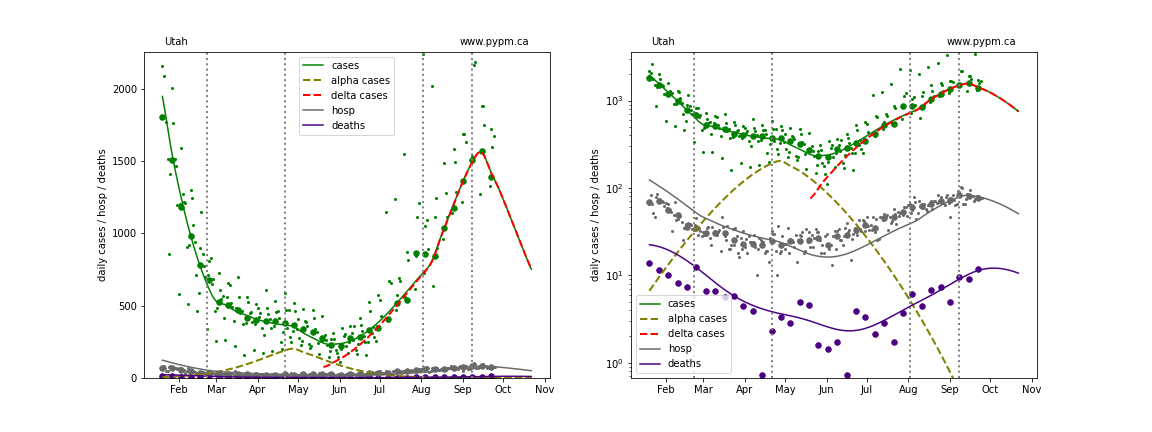
Virginia
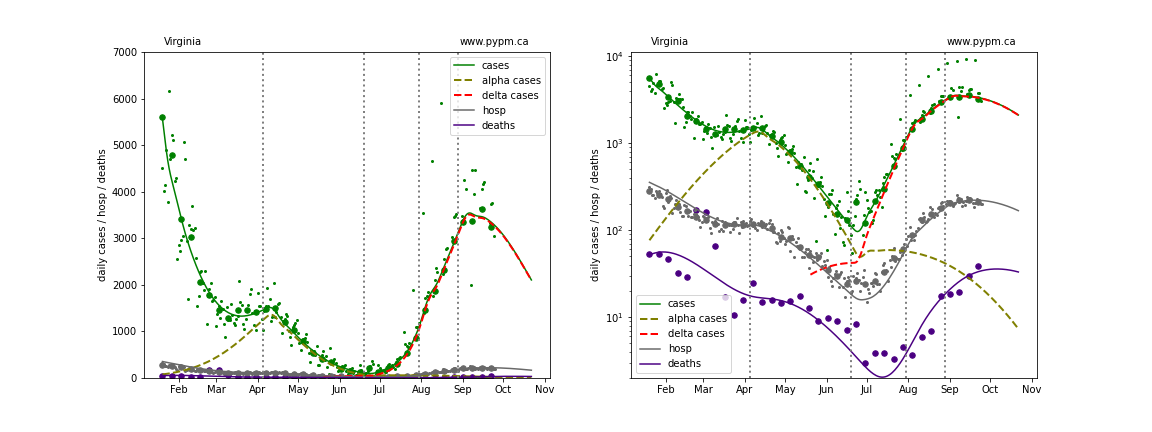
Vermont
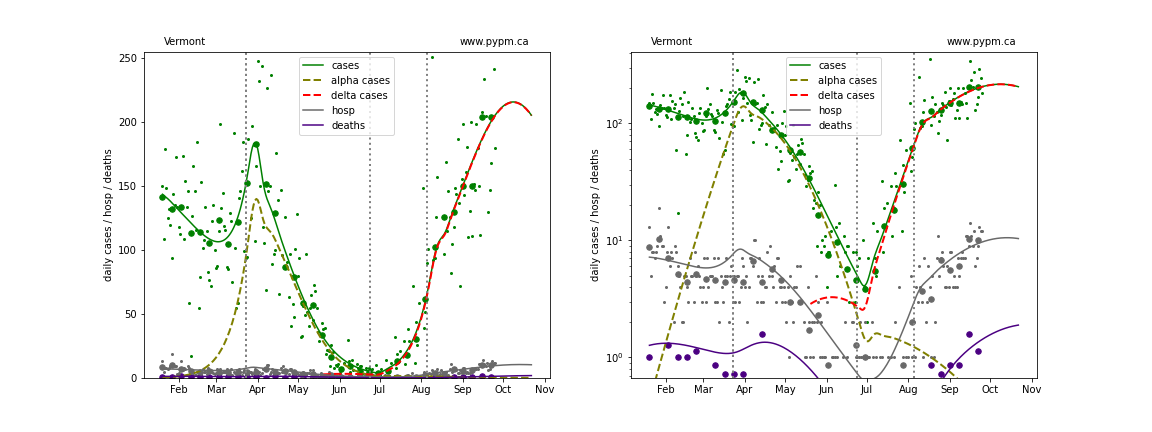
Washington
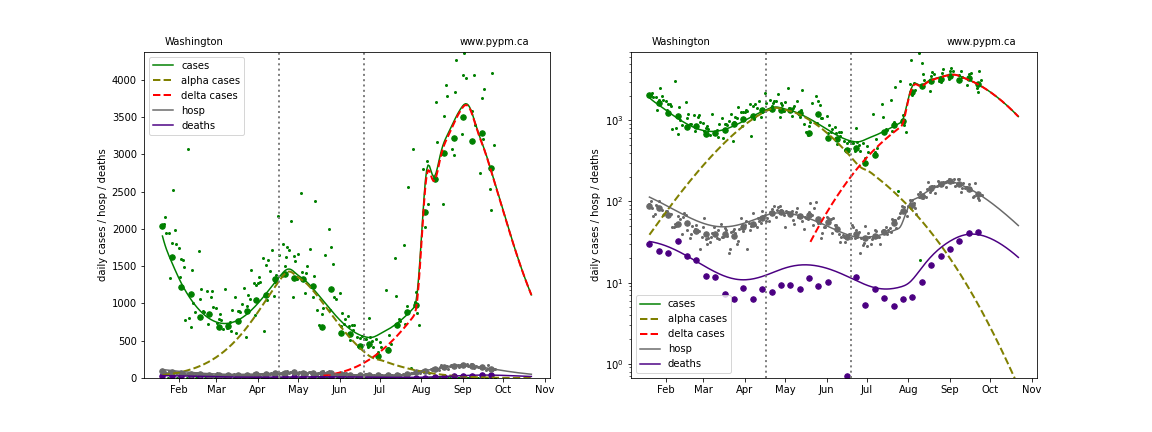
Wisconsin
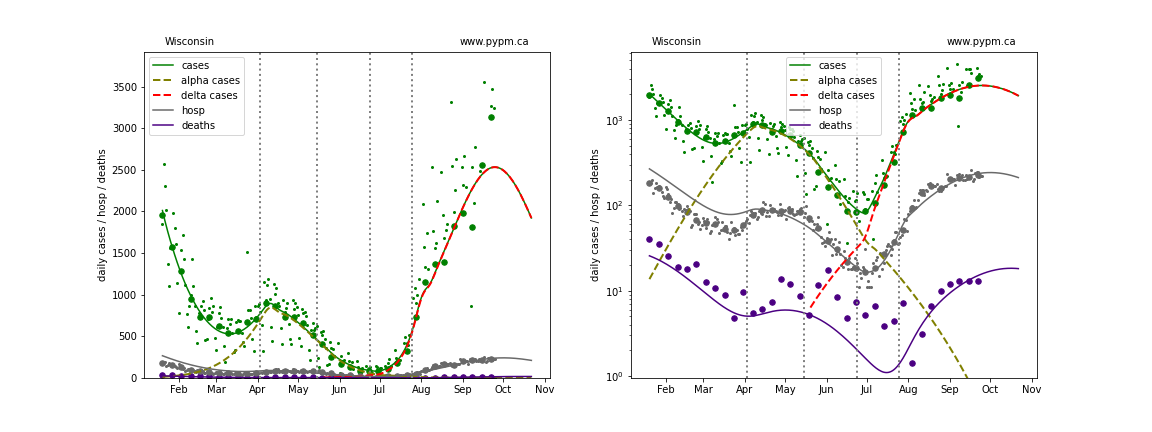
West Virginia
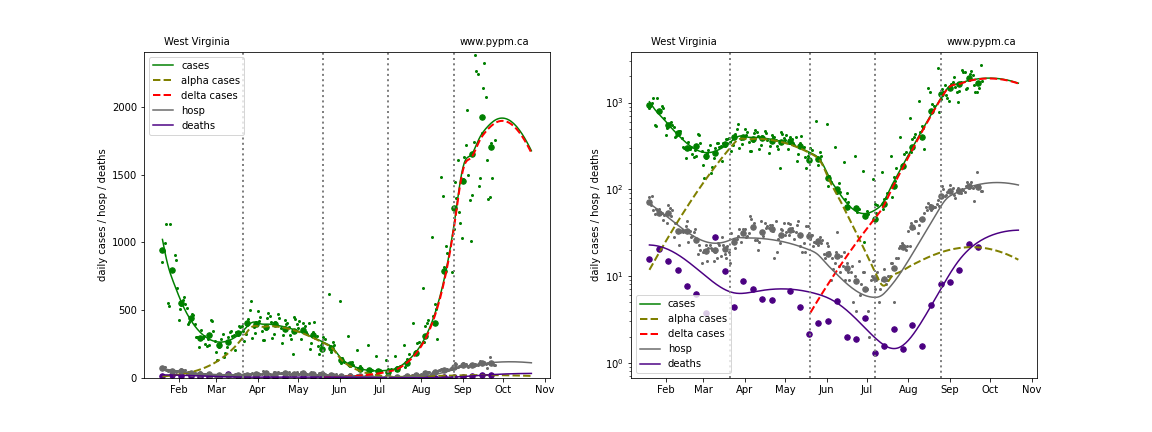
Wyoming
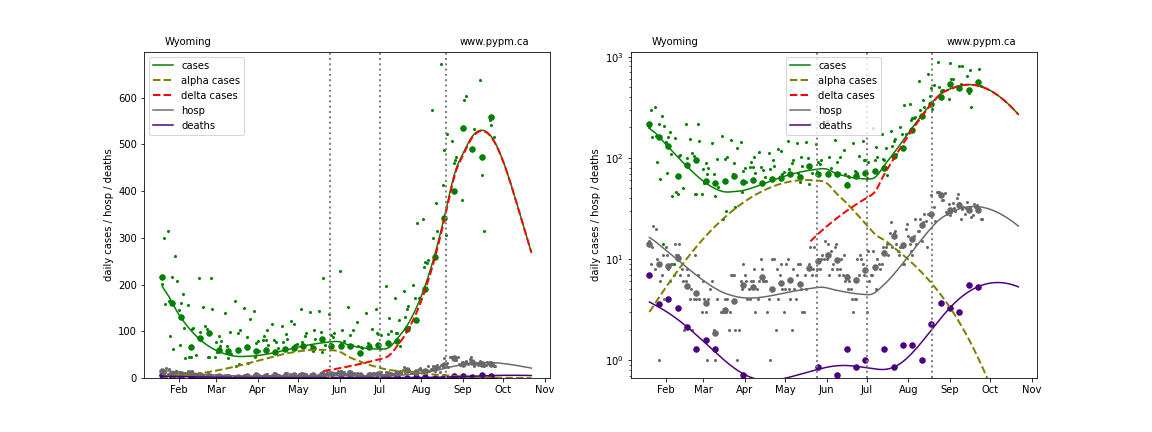
Comparing prevalence between states
The following plots show the daily cases per 100,000 people in each state, grouped according to the 10 standard federal regions.
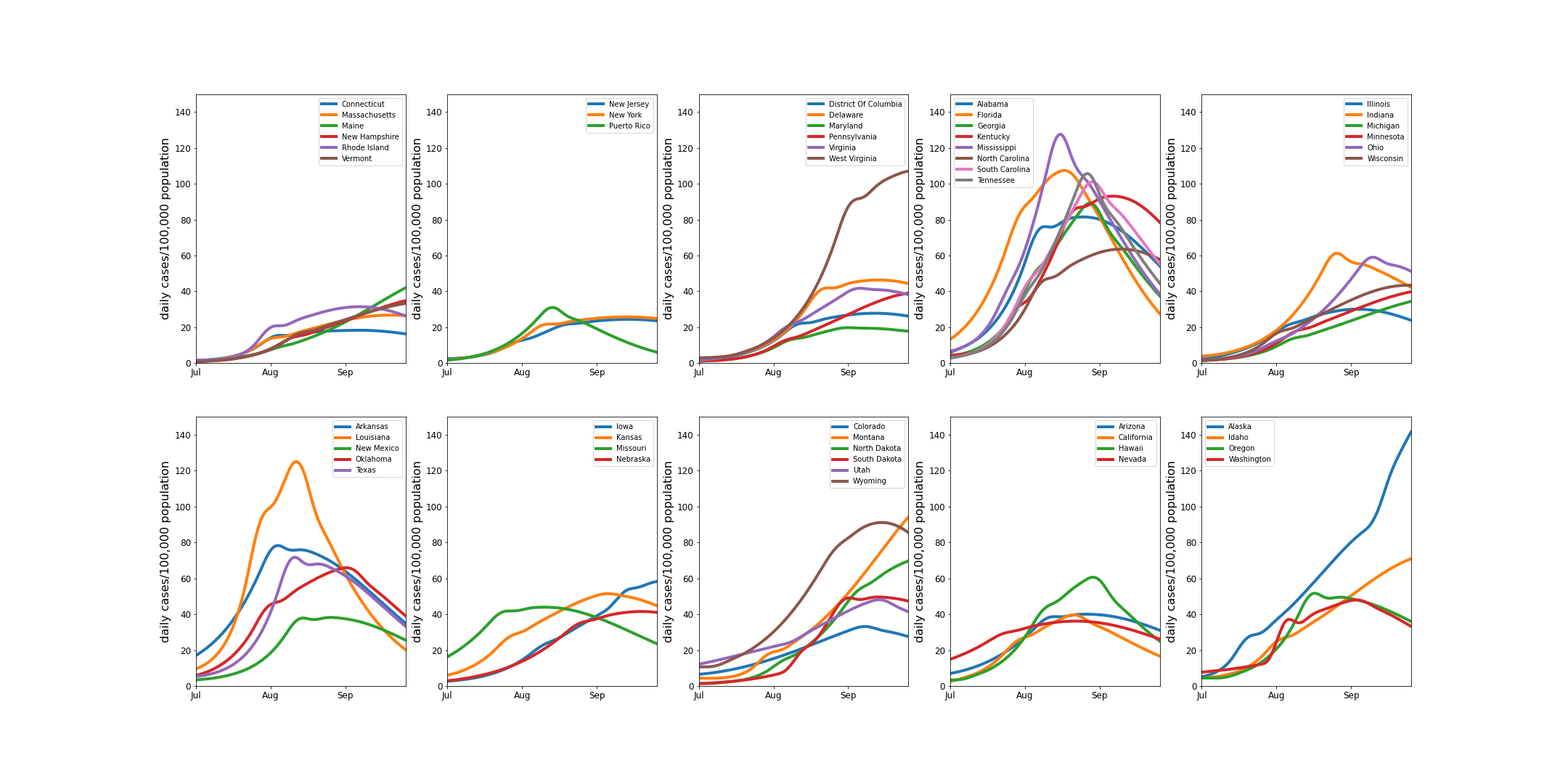
USA Forecast
The following plots show the combined US 4 week forecast. The shaded areas are 50%, 80%, and 95% intervals. Overall, case rates are forecast to be declining.
USA
